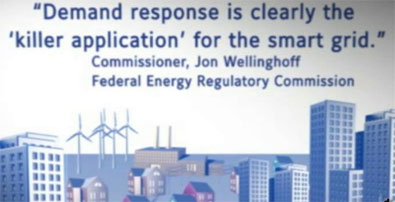As has been the case for several years, cleantech venture capital has been focused on efficiency, energy storage and smart grid technologies, investing $1.7 billion last year, according to Mercom Capital Group.
Prices for batteries are dropping so much and so quickly, that they will be attractive to early-adopters who want back-ups for solar systems in just two years, according to a report by Renewable Energy Agency and KPMG. Grid-scale storage systems are already competitive in some areas, they say, but national policies that favor utilities are getting in the way.
2016 will be a breakthrough year for energy storage and demand response systems, says the Renewable Energy Agency.
The Supreme Court helped on that front today, upholding FERC’s authority to set standards and rates for integrating demand response into the grid. While utilities call it overreach, FERC requires taxpayers who lower their energy use through demand response technologies be paid the same as if they were providing electricity.
That means that individuals and businesses who use smart thermostats, energy management tools, solar PV, back-up batteries, and plug-in electric vehicles can all get paid for being energy efficient!
This is the "biggest consumer energy story of the day, and perhaps the decade," says Jon Wellinghoff in the Renewable+Law Blog.
Using these technologies, ratepayers can cut energy use during peak use hours, reducing the strain on the grid, increasing reliability, and eliminating the need for dirty back-up fossil fuel power plants. This win-win situation saves customers money, substantially increases energy efficiency, reduces air and water pollution, and makes it easier to integrate renewable energy into the grid.
Therefore, electricity customers should be paid for reducing energy demand on the grid at the same rate as it would cost for utilities to supply it in the first place.

Read our articles, FERC Issues Landmark Rule on Demand Response and Renewable Energy Just Got Easier to Tie to the Grid.
